The Fish Lady
For a while, early on in my career, I could have been known as the Fish Lady.
Quilts of fish were some of the first pieces I made for a general market. Before, I had done either commissions (portraits, buildings, and so on) or larger portrait quilts that I made mostly just for me.
It took so long and required so much effort to make a quilt that my work was priced far beyond most peoples’ budgets. This fact bothered me. I had received such a positive response from people of all types—men and women, rich and not so—that I wanted to share my quilts with everyone.
Also around that time, the early 1990s, I made my first really successful quilt, “Elements,” which won best in show at an exhibit at the League of New Hampshire Craftsmen annual fair. The piece is a personification of the four elements. In order to make each portrait unique and representative of earth, air, fire, or water, I used bright, non-realistic colors basically for the first time. After that, I wanted to use MORE of those colors in whatever I did.
The Subject of the Matter
So I started looking for colorful subject matter I could market to the public. Eventually I found a book of tropical fish—an old one with full color plates of the species. I immediately knew I was on to something.
First of all, the fish were naturally bright and patterned. You know me and color. I love it. And it didn’t take me long to realize that almost nobody would know (and nobody would care) if I made them even more colorful. I could also tinker with their anatomy, making fins and gills and tails even more fanciful.
But also important was the fact that I could make them small enough to finish in a reasonable amount of time (a week or less), keeping the price point low, while still making a decent part-time wage. Many of my fish averaged 12 x 16 inches, which fit nicely into the 16 x 20 inch frames that I was making every day in my job as a picture framer. But many were even smaller, as tiny as 4 x 6 inches.
Beginnings
Around 1993, I made my first fish quilt. To be frank, I don’t remember exactly which was my first, but here’s one from early on that probably was similar:

The fish opened up all sorts of doors to me besides retail sales. Those quilts led directly to my first book, Free-Style Quilts, which uses this fish as a sample project:
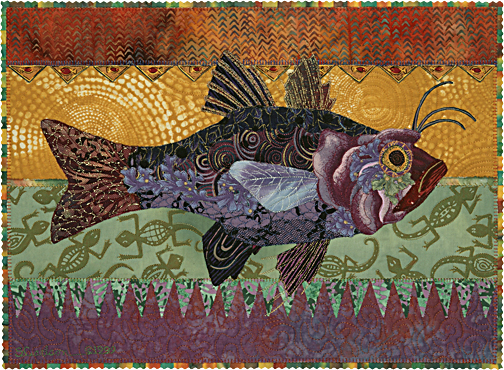
Fish quilts also led me to teaching, especially after the book was published. Much of my early teaching was fish classes.
In the next decade, I must have made well over a thousand fish. They ranged in style from realistic to fantastic. Sometimes I tried to create a faithful representation of a particular species, other times they were products of my imagination. Most of them were framed under glass.
Here’s a slideshow of a bunch:
The Fine Art/Craft Pendulum
You know pendulums? Yeah, they swing.
Eventually, I found that I had swung too far toward the retail sales end of my art. I didn’t have as much time to dedicate to the more absorbing and challenging bigger works. Meanwhile, teaching was really taking off, which meant I didn’t need to rely on selling the small pieces to provide income.
But leaving the retail mindset behind wasn’t easy. Maybe it comes from my childhood and young-adulthood when my parents ran a seasonal craft shop from their home in Maryland. My mom made sewn things like potholders and table runners, while my dad sold wood-working objects such as quilt racks and wooden christmas trees. As soon as I was old enough I joined in selling crafts of my own. That early experience definitely got me into the habit of making things to sell.
However, looking back at my fish, I see them not only as pieces of art themselves or money-makers. They were also studies. They were practice for bigger, more exciting pieces. I was training my eye to see shape and value in my subjects, while also learning to find the patterns in fabric prints I could use to recreate those shapes and values. These are the very skills I now try to impart in my classes.
In our society, I believe we overvalue talent and undervalue experience and training. Too often a piece of art is seen solely as the product of someone’s talent. It’s almost like magic. While technical expertise is thought to be the essence of “craft.”
Instead, the artists I know work really hard at their art and have years if not decades of training and experience. They do the same or similar things again and again until their technique is honed to a fine edge. That’s what the fish did for me.
I’m not sure whether the fact that effort is as important as talent is a comfort or a discouragement to my students. I hope it inspires them to keep at it.
Achieving Balance
I no longer make fish. Well, not at the moment anyway—remember that pendulum? In fact, I haven’t made any quilts to sell in years. I only make quilts for myself, which I then submit to competitions and shows, or use for promotion for classes. While this has cut down on my output, it has increased my personal satisfaction with my art and has upped my visibility in the quilt art world.
Unexpectedly, I feel I’ve discovered the balance between fine art and accessible art I was striving for when I started making fish. Instead of selling my art inexpensively in order to share it with people, they can either make it themselves in one of my classes, or they can see my work as it hangs in shows around the country.
I may not need fish anymore, but the impact of those early, smaller pieces carries on today.
NEXT WEEK: Building a Quilt Studio
Tales from the construction of my work space, from top to bottom.
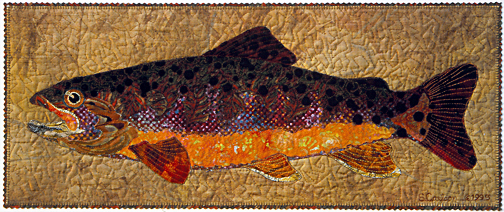

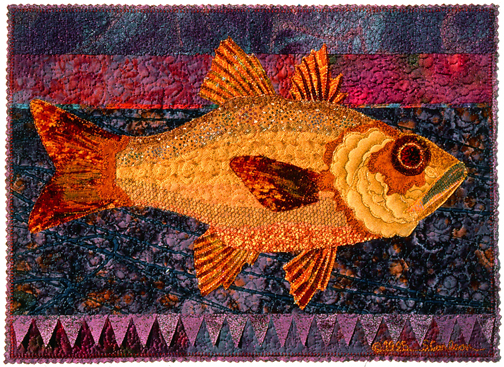
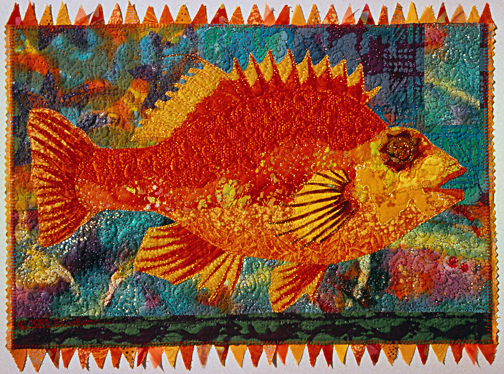
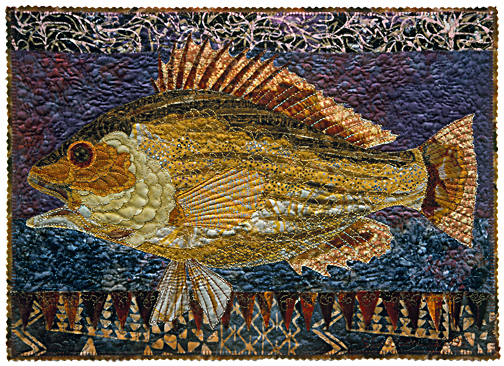
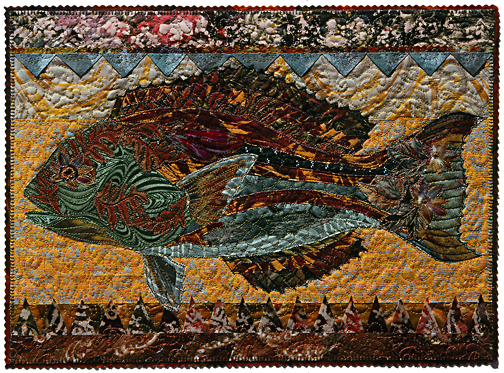
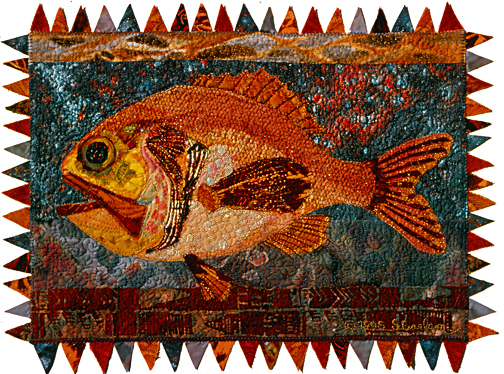
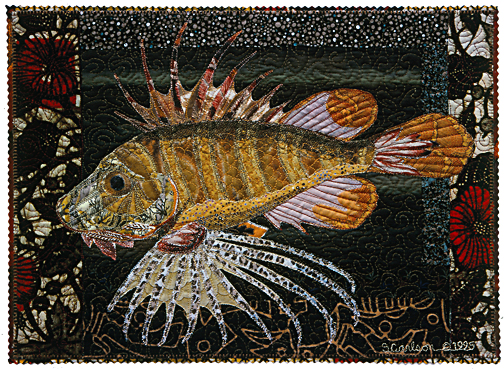


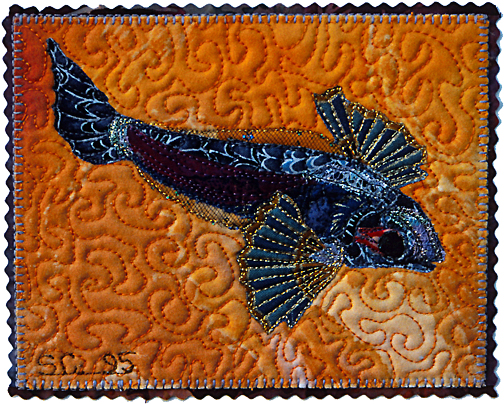
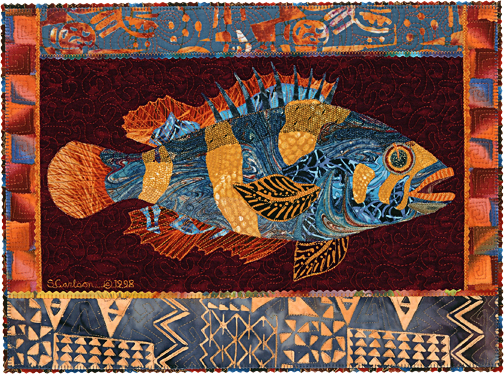
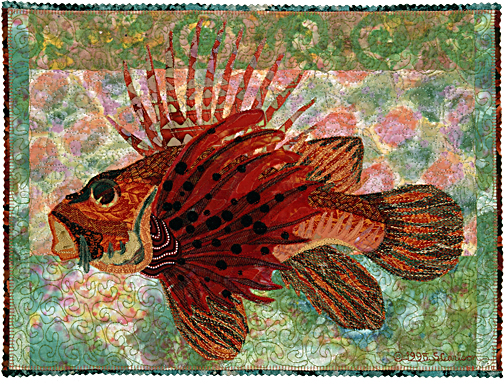
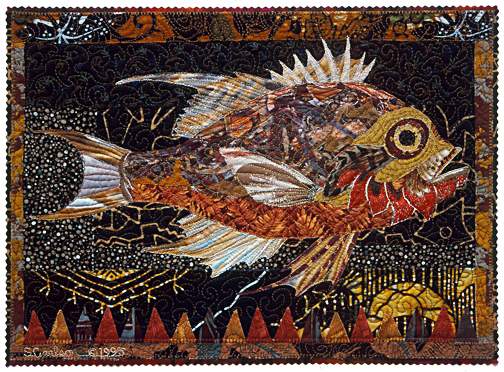

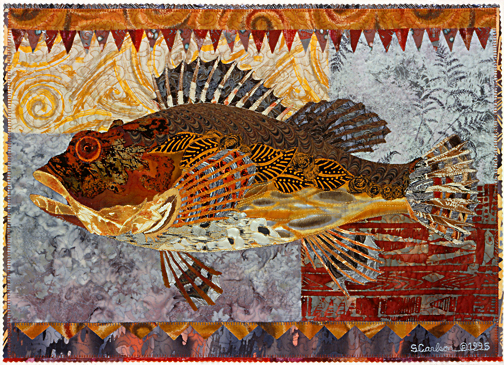
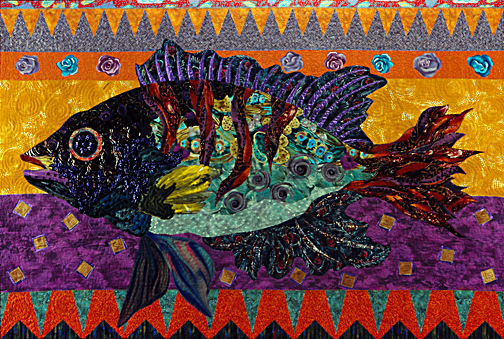
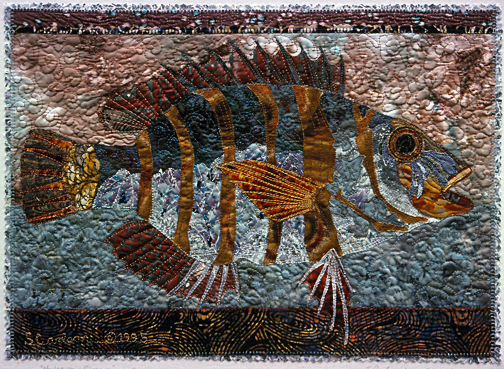

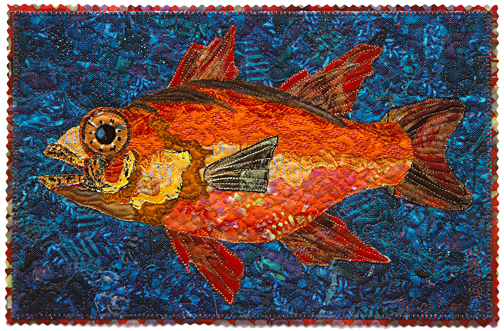
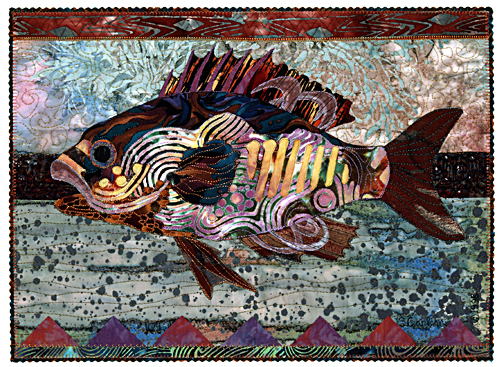

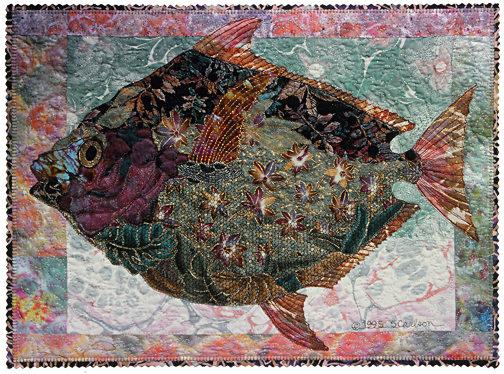
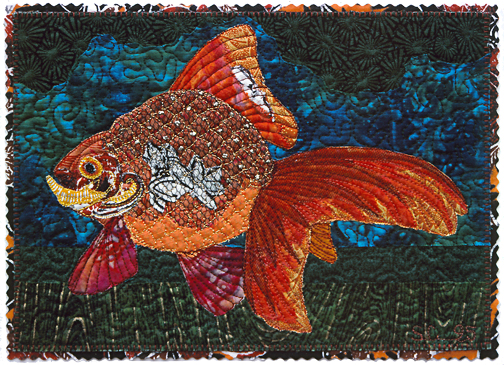
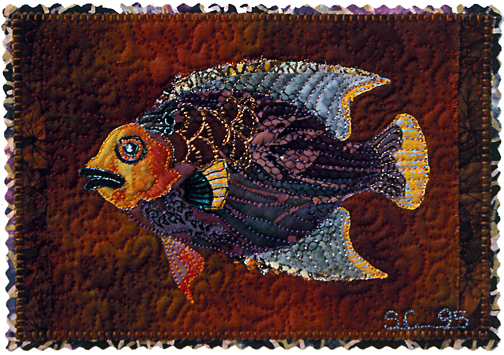

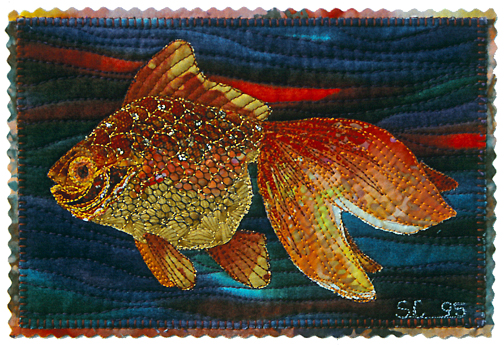
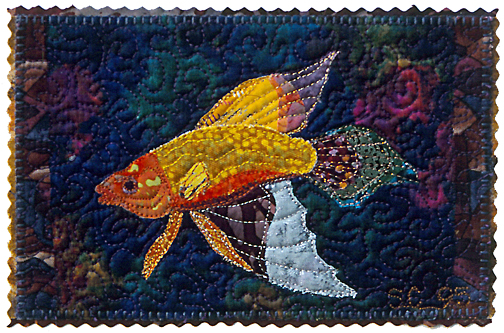

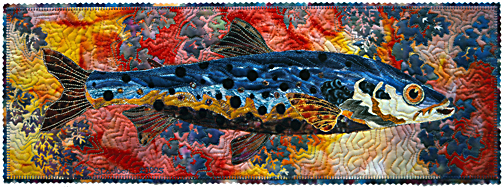
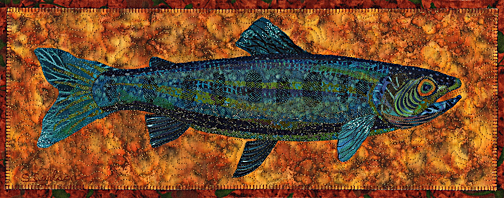
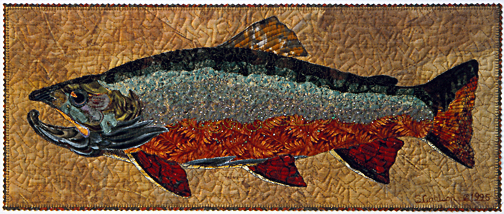
Reading your two books has given me such a sense of freedom and the confidence that I can attempt and make any subject matter that appeals to me. For this I do thank you.
Thank you.
Working with Free-style quilts and absorbing the techniques of collage construction and free-style quilting really introduced me to the scope of my own creativity. The fish are just the perfect subject matter, for the reasons you’ve outlined. My dining room is my fish quilt gallery, from individual fish to multiple fish to a quilt aquarium. I’m ready to move on to other subjects, but I still love the thrill that comes from creating a new species of fish and giving it a home.
I am truly indebted to you!
You’re very kind. Thank you.
It seems that it all goes around in a circle. When I read this post, I realized that YOU were the person who did the fish!! I had bought your book about 10 years ago and actually started a couple fish – I still have them, not completed (I was working at running a company back then), but only last week I took a picture of one of them to send to a friend – to encourage her to play more! I’m into watercolor now and not quilting (for the time being anyway), but you absolutely inspire me with your creativity and commitment to long-term projects – and I love reading your blog. I saw ‘fish’ this morning and then you referred to “Elements” and I knew immediately which quilt it was and remembered how I’d loved it in the book. I ran to the bookshelf, grabbed your book and there it was. And there you were too! What fun to discover that someone I’m enjoying so much right now today was also the same person who sparked so many creative juices flowing back then. Thanks for writing!
Love your work! I can’t wait to see next week’ post about your studio, I am in the process of moving mine!
Actually, you read an old blog post. The one you’re looking forward to has already been published!